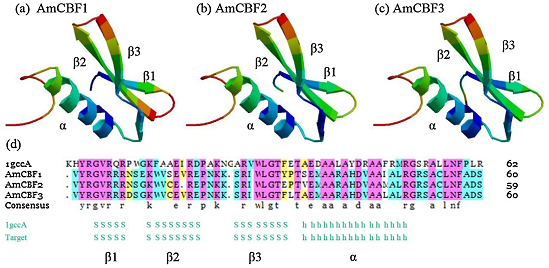The cold response mechanisms of mangrove plants at the molecular level were revealed

Mangroves are ever-green plant communities distributed along the tropical and subtropical coasts of the world. Since their great ecological importance, socio-economic significance, and obvious responses to global climate change, mangroves have become worldwide research focus.
Recently, the team of professor You-Shao Wang from South China Sea Institute of Oceanology, CAS, has reported the identification and expression analysis of three CBF/DREB1 (C-repeat binding factor/ dehydration responsive element-binding factor 1) homologues from mangrove plant Avicennia marina. The three genes are designated AmCBF1, 2 and 3. Expression analysis based on quantitative real-time PCR revealed that the three genes exhibited different responses to various environmental stimuli. The AmCBF2 was inducible by cold, drought, high salinity, heavy metals, as well as abscisic acid (ABA), and exhibited much stronger induction by cold, drought, Pb2+ or Zn2+ than by NaCl, ABA or Cd2+. In contrast, both AmCBF1 and AmCBF3 displayed insignificant changes under
these stimuli. These results indicate that the three AmCBF genes play different roles in A. marina and the AmCBF2 might be involved in the signaling pathway of cold, drought and heavy metal stress response.
The team of You-Shao Wang found for the first time that the CBF/DREB1 transcription factor genes were conserved in mangrove plants and involved in the signal transduction process of cold response of mangrove plants. The outcomes of the present study will lead to a better understanding of the cold-resistant mechanisms of mangrove plants, and also provides important theoretical basis for enhancement of cold resistance of mangroves using genetic engineering technique. The achievement about this research has been published in the journal of Aquatic Toxicology (http://dx.doi.org/10.1016/j.aquatox.2013.05.014).
This research was supported by the National Natural Science Foundation of China (No. 41176101 and No. 41076070), the projects of knowledge innovation program of Chinese Academy of Sciences (KSCX2-YW-Z-1024) and the key projects in the National Science & Technology Pillar Program in the Eleventh Five-year Plan Period (No. 2012BAC07B0402 and No. 2009BADB2B06).